Higher traffic often translates into increased sales for an eCommerce website. Store owners can now rely less on paid ads and social media campaigns and save money by harnessing the power of SEO to drive organic search traffic.
For anyone who is not an eCommerce SEO expert, this guide introduces you to the essential strategies that help you fine-tune your website and boost your search engine rankings.
Let’s get started!
What is eCommerce SEO?
eCommerce search engine optimization, or eCommerce SEO, involves implementing various strategies and techniques to optimize the visibility and ranking of your eCommerce website in search engine results pages (SERPs).
These encompass keyword research, technical SEO, content optimization, and more. For businesses striving to increase sales, utilizing the full potential of eCommerce SEO is crucial.
Now, let’s take a look into why SEO is important for eCommerce websites.
Why is SEO important for eCommerce websites?
Here are some of the key benefits of eCommerce SEO:
- A major portion of buyers search before they buy a product. In fact, 53% of shoppers emphasize the importance of research in their purchase decisions. SEO enhances a website’s ranking in the SERPs, boosting the store’s visibility and leading to increased sales opportunities.
- Businesses can focus on specific keywords or phrases, attracting relevant traffic that is more likely to convert into sales. This targeted approach ensures the leads generated are of higher quality.
- Organic traffic generated through SEO is free, as compared to paid ads.
- Websites that rank higher in the SERPs are often perceived as more credible sources by users. By achieving a higher ranking, eCommerce websites can build authority in their niche and build trust.
Besides these benefits, search engine optimization provides a competitive edge in the marketplace. Outranking competitors in search results increases the likelihood of product discovery and purchase, particularly if the website offers an exceptional shopping experience.
Strategies to Improve SEO for eCommerce Website
When it comes to eCommerce SEO, the aim is to enhance your store’s visibility to drive more sales. Let us now examine the most common eCommerce SEO strategies.
1. Keyword Research
Get your keywords right.
Keyword research involves identifying the words or phrases people use when searching for products. Optimizing your product pages for such keywords can improve your rankings in SERPs.
There are a few ways to kick-start your keyword research
Amazon Search Features

Utilize Amazon’s autocomplete feature to uncover popular searches related to your products. Adding these keywords to your product pages helps you achieve better search engine rankings.
Google Search Results
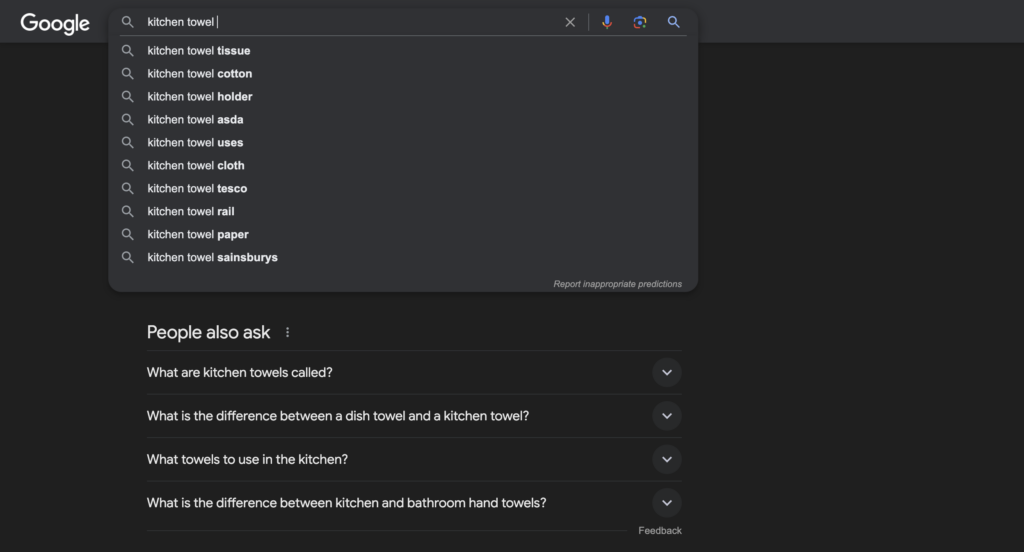
Google’s autocomplete feature also offers suggestions as users type their search queries. Exploring the “related search” and “people also ask” sections gives us further keyword ideas.
Keyword Research Tool
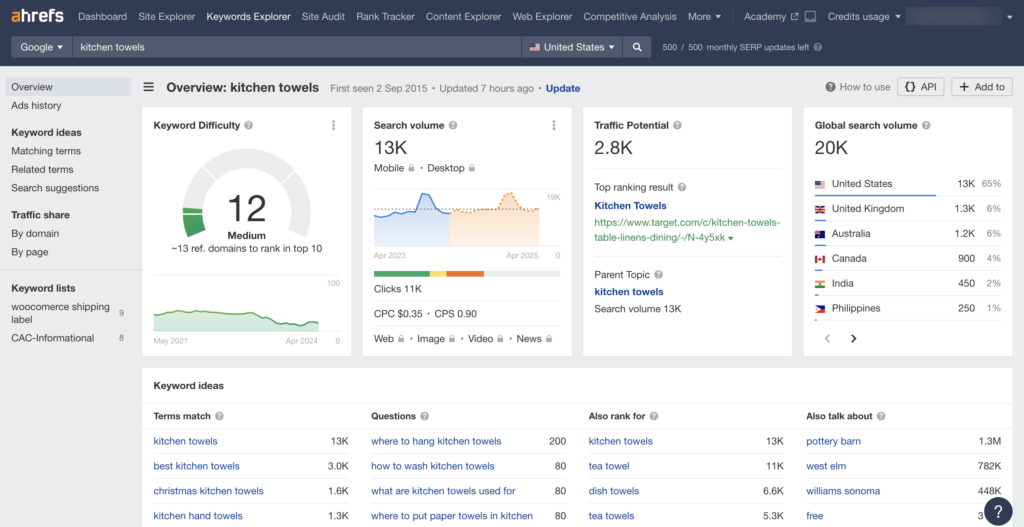
Take advantage of keyword research tools like Ahrefs, SEMRush, and Moz, which offer complete SEO solutions. Alternatively, research tools such as Ubersuggest and AskThePublic provide valuable keyword ideas.
Competitor’s keywords
Analyze the keywords your competitors rank for to understand their SEO strategies; how they optimize their pages can provide insights for your keyword research.
2. Site Architecture
Site architecture, or website organization, plays an important role in your overall SEO strategy. Improving site architecture enables search engines like Google to discover and crawl your product pages.
Without proper crawling, these pages may not be available for users to find.
A well-structured site results in better page visibility by ensuring all pages are accessible to search engine crawlers.
Properly connecting the homepage to category pages and category pages to product pages creates a navigable structure that facilitates the flow of link equity throughout the site.
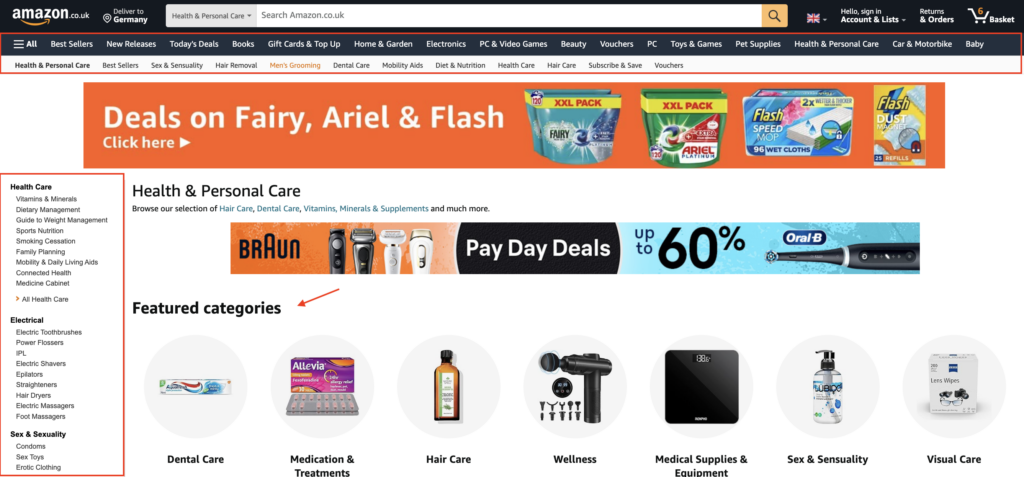
Amazon offers a range of categories, such as Health and Personal Care, Electronics, and more. Within Health and Personal Care, you’ll find subcategories such as Men’s Grooming, Dental Care, Hair Care, and others. Each of these is easily accessible from the main navigation menu, improving the user experience by making it easier for visitors to find relevant content.
This combination of better visibility and usability leads to higher rankings in SERPs, which results in increased organic traffic.
3. On-page optimization
We’ve tackled keyword research and ensured our website’s navigation is seamless. Now comes on-page SEO, where we optimize product and category pages to improve their search engine rankings.
On-page optimization includes various strategies such as refining meta titles and descriptions, optimizing product images, implementing schema markup, and more. Let’s explore these key elements to deepen your understanding:
Meta Title and Description
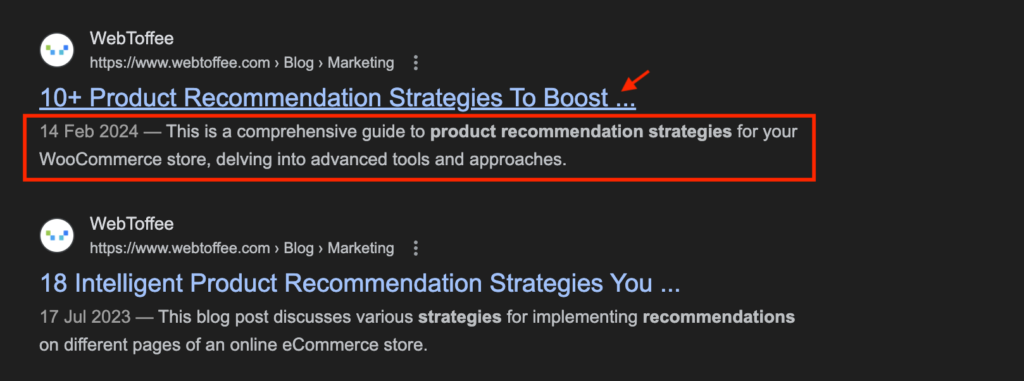
Meta titles and descriptions are vital components of SEO strategy. They serve as the first impression of your webpage in the SERPs that influence whether users click through to your site.
Incorporate relevant keywords and compelling language to communicate to your target audience. Aligning your meta title and description with their search queries enhances visibility and encourages engagement.
URL Structure

URL structure helps search engines comprehend your website’s content. Clear and descriptive URLs facilitate efficient crawling and indexing, ultimately improving store visibility.
Optimizing product images
High-quality images significantly enhance the user experience, increasing the likelihood of sales. Optimizing product images not only improves page speed, a critical factor in SEO but also ensures they appear in image search results, attracting organic traffic.

Using a free tool like ImageOptim to reduce image file size and optimize it for faster web speed is essential for achieving these benefits.
Also, adding relevant alt text assists search bots in understanding image content and improves website accessibility for users with disabilities who rely on screen readers.
Product Description
Optimizing product pages is integral to eCommerce SEO. Ensuring that each page contains unique and valuable content can significantly improve its ranking on search engines.

A well-crafted product description provides comprehensive information about the product, including its features, benefits, and instructions to use. Its purpose is to inform and convince store visitors about the product’s value, persuading them to take action. This underscores the importance of crafting a clear and detailed description with relevant keywords.
Internal Linking
Internal links help guide search engine crawlers through the website, facilitating the discovery and indexing of all pages. They also distribute link equity, passing authority from high-authority pages to product pages, signaling their importance to search engines.
Furthermore, internal linking creates a structured hierarchy for your website, which makes it easier to navigate and find relevant content.
However, use it sparingly, as the primary goal is to keep visitors engaged with the product pages.
Schema Markup
To ensure search engines recognize and index your content, it’s essential to speak their language.
One effective method is to add schema markup to your website—-—structured data in the form of code that provides search engines with additional context about your content.

Schema markup for product pages can include details such as product pricing, ratings, availability, delivery information, and more.
Google’s Structured Data Markup helper is a great tool for marking up elements on your web page. Implementing schema markup enhances your chances of appearing as rich snippets in search results, attracting more attention and traffic.
4. Technical SEO
Having covered some key aspects, technical SEO activities are the next crucial item on the eCommerce SEO checklist.
HTTPS
Hypertext Transfer Protocol (HTTP) facilitates communication between web browsers and servers, while HTTPS represents its secure counterpart.
HTTPS encrypts the data exchange between visitors and your website, safeguarding sensitive information like passwords and credit card details from hackers. Its presence signifies that your website is secure.
Also, HTTPS can improve your website’s ranking in the SERPs, particularly on Google.
Upgrading to HTTPS involves installing a Secure Sockets Layer (SSL) certificate, which verifies your website’s identity and establishes a secure connection between your server and your visitors’ browsers.
Optimize your store for Mobile
As online shopping moves more into handheld devices, providing a great experience across all platforms becomes vital. Optimizing your website for mobile ensures that users can navigate, browse, and make purchases without any friction.

Furthermore, Google’s mobile-first indexing approach emphasizes the need for websites to be compatible with mobile devices, as this will significantly impact their performance in search results.
Sitemap
A sitemap is a structured list of all the pages on your website, providing search engines with a clear roadmap for crawling and indexing. This ensures that all your product pages are efficiently discovered and indexed.
Moreover, when you add new products or pages to your website, the sitemap facilitates the crawling process, allowing prompt identification and indexing of recent content.
To ensure seamless operation, submit your sitemap to Google Search Console or other search engines.
Sitemaps also help diagnose any crawling errors or technical issues that search engine bots may encounter during the indexing process.
Improve your Page Speed
Faster loading times are key to delivering a good shopping experience. Visitors are inclined to engage with your website and explore products when pages load quickly. Moreover, page speed is a primary ranking factor for search engines.
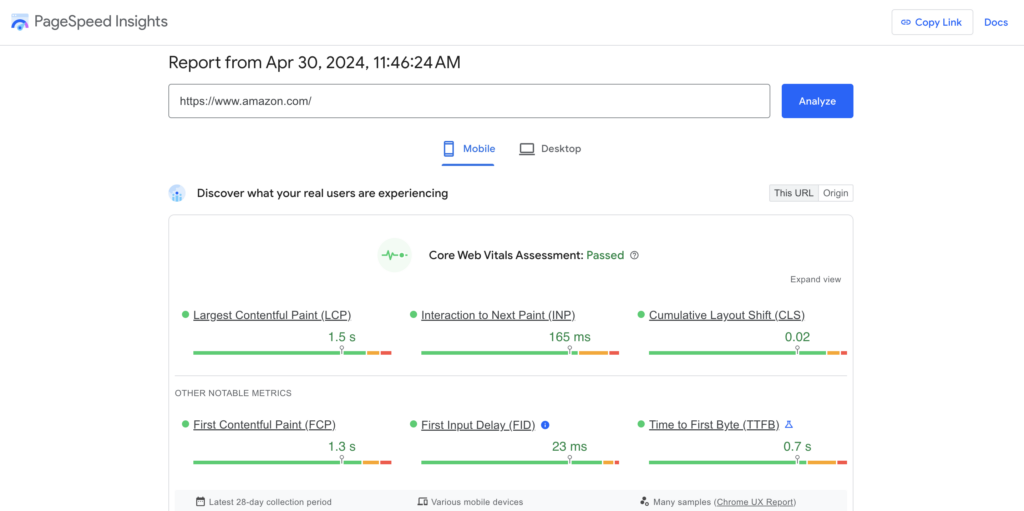
Various tools are available to optimize this primary ranking factor. Google’s PageSpeed Insights evaluates page speed on mobile and desktop and offers suggestions for enhancing performance.
Optimizing your website’s page speed can significantly improve your chances of ranking above competitors and attracting more organic traffic.
5. Link Building
Link building involves acquiring links from other relevant websites to point to pages on your website. The primary goal is to strengthen your backlink profile, thereby increasing your domain authority and search engine rankings.
In the case of eCommerce SEO, acquiring links from various sources, such as suppliers, distributors, product reviewers, guest posts, and affiliates, enhances your backlink profile, driving more organic traffic to your eCommerce store.
6. Measure your SEO performance
You’ve optimized your pages for on-page SEO, addressed technical issues, and secured valuable backlinks. But how do you gauge the effectiveness of your efforts?
It’s through measuring your SEO performance.
- Organic traffic growth is a clear indicator that your SEO strategies are yielding results. Monitor your website’s organic traffic over time to assess the impact of your SEO efforts.
- Google Search Console provides invaluable insights into your website’s performance. You can track metrics such as clicks, impressions, click-through rates (CTRs), and average positions of pages. These insights help you understand how your website is performing in SERPs.
- Google Analytics offers comprehensive data on website traffic, including traffic sources (organic search, paid search, referrals), user behavior, and demographics. Understanding where your traffic is coming from can help identify opportunities to optimize your SEO strategies further to attract more relevant traffic.
Ultimately, organic conversions are the primary goal of SEO. They indicate how effective your eCommerce site is in converting potential leads to customers. Analyze organic conversion rates to measure the success of your SEO efforts and subsequently drive revenue.
Conclusion
Mastering eCommerce SEO requires attention to detail and a commitment to continuous optimization. By implementing the above strategies, you can boost your visibility and bring high-quality traffic to your store.
From conducting keyword research to on-page optimization and addressing technical SEO issues, each step is crucial in improving your website’s place in SERPs.
Additionally, it’s vital to monitor traffic growth, click-through rates, and user behavior to gain valuable insights.
This is a solid starting point for eCommerce SEO. Keep an eye on this space for more information on all things eCommerce, and continue your journey towards mastering eCommerce SEO.





